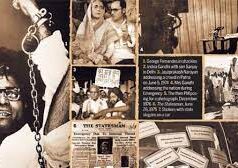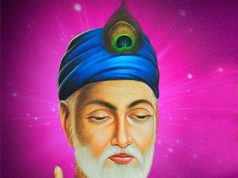
–Ananth Seth
June 4, 2021 marks the 32nd anniversary of the harsh, iron-fisted military crackdown to end what were ostensibly pro-democracy protests by students, in 1989 at Tiananmen Square in the capital city of China. It resulted in unknown but high number of civilian casualties. Although demonstrations also occurred in other cities, notably in Shanghai, Nanjing, Xi’an, Changsha and Chengdu, the events at Tiananmen Square have come to symbolize the entire incident. Tiananmen was extensively covered because a large number of journalists had gathered there to report on a visit by Mikhail Gorbachev in mid-May. Shortly after Gorbachev’s arrival, a demonstration in Tiananmen Square drew some one million participants and was widely broadcast. By 5th of June, 1989, military had secured complete control and the area had been cleared of protesters.
The loudest and the clearest lesson that comes out from Tiananmen is that protests, demonstrations and even ‘uprisings’ can have converse and unanticipated effects. Thirty years is a very long time to ruminate upon the actual repercussions of a major event. Over the last three decades, China – the country which experienced, faced and met with iron hand a tumultuous event referred to in the Western Media as ‘Pro-Democracy Student Uprising’ – has experienced dramatic changes many of which can be linked to the choices the Chinese government made in the year 1989. The choice was essentially to dump the ‘maintaining balance’ approach and of segregating important issues so that policy prioritization can take place. The result of those choices is that our rival China is today the world’s factory and a world power.
Despite China being our rival, it is difficult not to be impressed by the way an internal uprising, arguably sponsored by hostile and conspiring external forces, was handled effectively and decisively by the Chinese authorities. It was the crackdown which ensured that an anti-government movement, euphemistically labelled as ‘pro-democracy movement’ did not succeed in its plans. We cannot afford to forget how the so called Coloured Revolutions’ have been used by some western countries to destabilize or demolish uncomfortable regimes. By quelling the Tiananmen rebellion, China sent out a loud and clear signal to the external conspirators that their broth will not cook in China. We Indians too can take a lesson or two from China as to how to deal with ‘sponsored agitations’, albeit not in the same method as we are a democracy first and last.
The post-Tiananmen discourse and the narrative that has been attempted to be set teach us another important lesson: not only can media strengthen protests by stoking the momentum, it can actually become the repository of potentially dangerous collective memories. It goes without saying that internet in general and defiant social media platforms in particular have made that power of the media more lethal and all pervasive.
The world is witnessing a surfeit of peoples’ protests and India too seems affected, with the focus moving from Kashmir to the rest of the country in the wake of passing of Citizenship Amendment Act. What was attempted in Tiananmen in 1989 was a failed attempt the overthrow or destabilize a communist regime. But what our nation India is witnessing today are concerted conspiracies to overthrow a democratically elected popular regime. We cannot afford to fail today where China succeeded in 1989.
(Author is Hyderabad-based Legal Practitioner)














